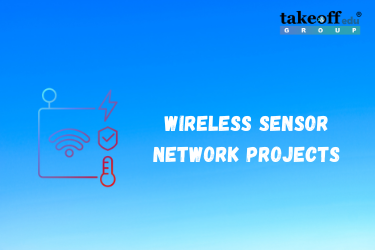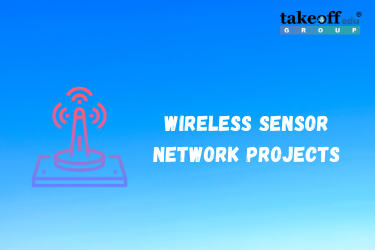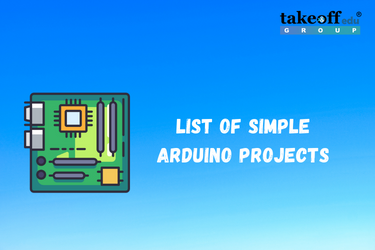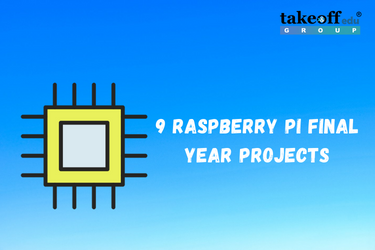Earlier only traditional networks were utilized to connect various devices, but due to advancements in the modern scientific world any type of smart gadgets or devices can be connected through the wireless interfaces. Irrespective of the numerous heterogeneous types of networks present within the vast networking sector, WANs, LANs and WSNs are the main categories.
The interaction with the several billions of devices is made possible in the modern world through the usage of networks. It offers a method for learning about certain details of things present in the environment. The knowledge in the networks and other related topics can certainly improve your career, smarten your way of thinking and progress your networking skills.
Top Wireless Sensor Network Projects with Source Codes
- LEACH Protocol Enhancement for Increasing WSN Lifetime
- Optimization of Wireless Sensor Networks Using the ANT COLONY OPTIMIZATION
- A Node Overhaul Scheme for Energy Efficient Clustering in Wireless Sensor Networks
- An Improved Energy Efficient Clustering Protocol to Prolong the Lifetime of the WSN-Based IOT
- Energy-Efficient Resource Allocation in Wireless Energy Harvesting Sensor Networks
- Low power Smart Vehicle Tracking, Monitoring, Collision avoidance and Antitheft System
- Smart Door Using Biometric NFC Band and OTP Based Methods
- Real-time Wireless Embedded Electronics for Soldier Security
- Arduino Based traffic congestion control with automatic signal clearance for emergency vehicles and Stolen Vehicle Detection
- Multi-Functional Blind Stick for Visually Impaired People
- Design and Application of Intelligent Agriculture Service System with LoRa-based on Wireless Sensor Network
- Covert Wireless Communication in IoT Network: From AWGN Channel to THz Band
- Energy-Efficient Resource Allocation in Wireless Energy Harvesting Sensor Networks
- On Performance of Underwater Wireless Optical Communications Under Turbulence
- Energy-Neutral Wireless Sensor Network Based on SWIPT in Wireless Powered Communication Networks
- On the Feasibility of Deep Learning in Sensor Network Intrusion Detection
Also read : Wireless Sensor Network Projects Topics
Wireless Sensor Networks (WSNs)
Wireless Sensor Network (WSN) is a network of sensors which is capable of communicating or transferring data in the wireless mode based on an ad hoc design. The WSNs are capable of monitoring any surrounding environment and give accurate and trusted information. Hence, WSNs are employed to measure various natural conditions like wind, temperature, humidity, sound and pollution.
WSNs can even communicate or transfer data to neighbouring nodes and other servers due to the wireless nature. Due to such benefits of WSNs, they are applied to a wide range of applications such as industries, healthcare and wherever remote monitoring is required.
Classification of Wireless Sensor Networks
Wireless Sensor Networks are classified into five different categories based on the environment where the WSNs are employed. The different categories of WSNs are:
Terrestrial WSNs
Underground WSNs
Underwater WSNs
Multimedia WSNs
Mobile WSNs
As the name suggests, terrestrial WSNs are placed above the ground level. Normally thousands of WSNs are employed either in structured or unstructured manner so that numerous base stations can communicate with each other effectively.
Underground WSNs
Underground WSNs are similar to the Terrestrial WSNs but differ by the fact that the former is deployed below or under the ground level. The cost of underground WSNs are comparatively more than the terrestrial WSNs due to the costs for deployment, maintenance, planning etc.
Underwater WSNs
Around 70% of earth’s surface is covered with water bodies. Hence it is necessary for these kinds of underwater WSNs to gather important information from the water bodies. Underwater WSNs are present in the form of vehicles or any other type of sensor nodes.
Multimedia WSNs
Multimedia WSNs are utilised for the monitoring and tracking of various multimedia formats like image, audio and video.
Mobile WSNs
The category of WSNs that are capable of moving on their own for interacting with the surrounding environment is known as Mobile WSNs. They are easily known as MWSNs.
Top WSN Applications
Some of the top applications of WSNs that are used in the day to day activities are listed below such as:
Monitoring and surveillance of theft activities.
Monitoring the wildlife behaviour and surrounding environment.
Remote Prediction of the patient’s health condition.
Monitoring the operation of smart city and building models.
Managing the quality of water and preserving it.
Detecting and controlling the level of pollution in air.
Managing the disasters occuring everywhere around the earth.
Significant Components of WSNs to Progress Wireless Sensor Projects
It is very important for the WSNs to include certain components to aid the sensing of the environment effectively. These significant components of WSN are listed below:
Controller
Transceiver
External Memory
Power Source
Controller
Microcontrollers are commonly used as controller which is responsible for controlling the overall functioning.
Transceiver
Transceiver is responsible for the receiving and transmitting of the sensed data.
External Memory
To receive or transmit sensed data demands some important blocks. Riding the tasks, storing sensed data locally. For e.g., Flash Memory.
Power Source
Supplies power for all sensor tasks. For e.g., Batteries.
In simple terms, a sensor consists of all the above components to perform the tasks. In recent times, sensors have become smarter by including the newest techs too.
Also read : CSE Projects
Challenges under WSN
Resource-Constrained Nature of Motes
Lack of Security and Privacy
Data Corruption due to Wireless Channel
Geographical Distribution of Sensors
Sensor Holes because of energy consumption
Lack of Mobility Support and Management
Reliability, Responsiveness, and also Scalability
The above mentioned challenges existing under WSNs are helpful to the students wishing to do WSN based projects.
Why to do Wireless Sensor Network Projects with Source Codes?
The field of Wireless Sensor Networks (WSNs) is developed very much and is of great scope for the students who have knowledge in the WSNs. It is capable of reshaping the career opportunities of students and research motivations of research scholars. WSNs are ap[plicable to every nook and corner around the world and the importance of WSNs can be seen through the bare eyes. Hence final year students doing Wireless Sensor Projects with Source Code can gain both practical as well as the coding knowledge.
Important Metrics in Wireless Sensor Network Applications
Some of the important metrics considered in the applications of Wireless Sensor Networks (WSNs) are listed below:
Communication Reliability
Network Tolerance
Communication Range
Communication Security
Communication Throughput
Node Robustness
Source Coding
The process of encrypting or encoding the details through the usage of fewer bits than the bits taken for the actual representation is source coding in the field of computer science and information technology.
Source Coding can be done by three different ways such as:
MATLAB
Python
NS2
MATLAB
MATLAB (an abbreviation of "MATrix LABoratory) is a proprietary multi-paradigm programming language and numeric computing environment developed by MathWorks. It was designed by Cleve Moler and made its first appearance in the late 1970s. The heart of MATLAB is the MATLAB language, a matrix-based language allowing the most natural expression of computational mathematics. MATLAB allows matrix manipulations, plotting of functions and data, implementation of algorithms, creation of user interfaces, and interfacing with programs written in other languages. As of 2020, MATLAB has more than 4 million users worldwide. They come from various backgrounds of engineering, science, and economics.
Python
Python is a high-level, interpreted, general-purpose programming language developed by Python Software Foundation. It was designed by Guido van Rossum and made its first appearance on February 20, 1991. Guido van Rossum began working on Python in the late 1980s as a successor to the ABC programming language and released the first Python as v 0.9.0. Its design philosophy emphasises code readability with the use of significant indentation. Python is dynamically-typed and garbage-collected. It supports multiple programming paradigms, including structured (particularly procedural), object-oriented and functional programming. It is often described as a "batteries included" language due to its comprehensive standard library. Python consistently ranks as one of the most popular programming languages.
NS2
NS2 stands for Network Simulator Version 2. It is an open-source event-driven simulator designed specifically for research in computer communication networks.
Network Simulator (Version 2), widely known as NS2, is simply an event-driven simulation tool that has proved useful in studying the dynamic nature of communication networks. Simulation of wired as well as wireless network functions and protocols (e.g., routing algorithms, TCP, UDP) can be done using NS2. In general, NS2 provides users with a way of specifying such network protocols and simulating their corresponding behaviours.
Conclusion
The importance of doing Wireless Sensor Network Projects with Source Code is elaborated in the article. The introduction about the WSNs, its types, applications, components, challenges, etc are explained. Then the type of source coding is also explained. FInally the top projects in Wireless Sensor Network with Source Code are listed.

 Smart Irrigation with Embedded AI: Digital Farming
Smart Irrigation with Embedded AI: Digital Farming  Designing Smarter Cities: Embedded IoT Systems for Urban Innovation
Designing Smarter Cities: Embedded IoT Systems for Urban Innovation  Top 5 PIC16F77A Projects for Embedded Students
Top 5 PIC16F77A Projects for Embedded Students  Top 7 Arduino Projects for Students
Top 7 Arduino Projects for Students  Top 5 Node MCU Projects
Top 5 Node MCU Projects  Top 5 Raspberry Pi Projects
Top 5 Raspberry Pi Projects  Top 7 ARM7 Project Ideas
Top 7 ARM7 Project Ideas  Top 5 Mechatronics Projects for ECE
Top 5 Mechatronics Projects for ECE  Top 5 Renewable Energy Projects Ideas
Top 5 Renewable Energy Projects Ideas  Top 7 Biomedical Projects for Students
Top 7 Biomedical Projects for Students  Top 7 Artificial Intelligence Project Ideas
Top 7 Artificial Intelligence Project Ideas  Top 7 WSN Projects for Students
Top 7 WSN Projects for Students  Top 7 Machine Learning Projects for BTech & MTech
Top 7 Machine Learning Projects for BTech & MTech  Top 7 Image Processing Projects
Top 7 Image Processing Projects  Top 7 Industrial Automation Projects
Top 7 Industrial Automation Projects  Top 7 Deep Learning Projects for Final Year Students
Top 7 Deep Learning Projects for Final Year Students  Top 7 Robotics Projects for Engineering Students
Top 7 Robotics Projects for Engineering Students  Top 7 IoT Projects for Students
Top 7 IoT Projects for Students  Arduino based Projects for Final Year
Arduino based Projects for Final Year  Embedded Projects for ECE
Embedded Projects for ECE  FPGA Projects for Engineering Students
FPGA Projects for Engineering Students  New Deep Learning Projects Ideas & Topics 2022
New Deep Learning Projects Ideas & Topics 2022  Machine Learning Projects for Final Year CSE
Machine Learning Projects for Final Year CSE  Engineering Projects on Machine Learning
Engineering Projects on Machine Learning  Wireless Sensor Network Projects
Wireless Sensor Network Projects  Latest Bio Medical Projects for Students
Latest Bio Medical Projects for Students  Innovative Bio Medical Project Ideas & Topics 2022
Innovative Bio Medical Project Ideas & Topics 2022  21+ Interesting Mini Projects on Robotics
21+ Interesting Mini Projects on Robotics  Engineering Student Projects on Robotics
Engineering Student Projects on Robotics  Innovative IoT Project Ideas for Engineering Students 2022
Innovative IoT Project Ideas for Engineering Students 2022  Latest Mini Projects for ECE Students 2022
Latest Mini Projects for ECE Students 2022  List of Simple Arduino Projects
List of Simple Arduino Projects  Innovative Machine Learning Projects
Innovative Machine Learning Projects  9 Raspberry Pi Final Year Projects
9 Raspberry Pi Final Year Projects  7 Interesting IoT Based Projects
7 Interesting IoT Based Projects  Top 10 Real Time Embedded Systems Projects for Students 2022
Top 10 Real Time Embedded Systems Projects for Students 2022 
 Paper Publishing
Paper Publishing


